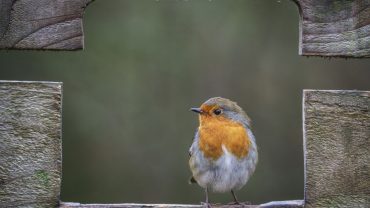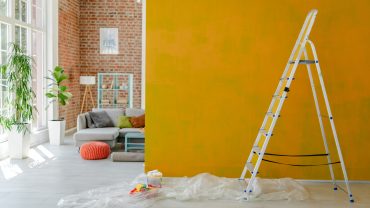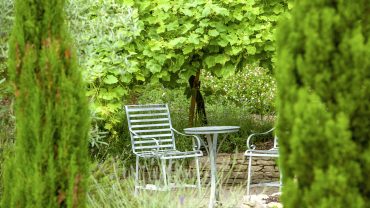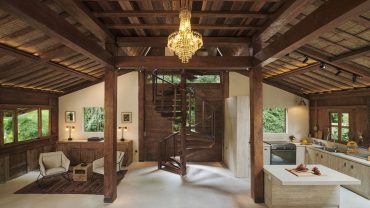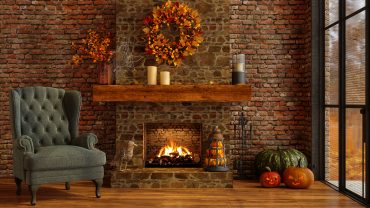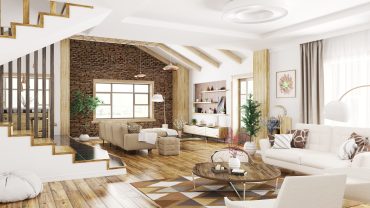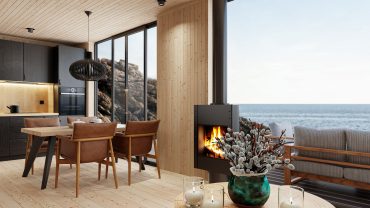A combination of a number of design styles, including Japandi, mid-century modern, coastal and contemporary, organic modern interiors are where the elegance of minimalism and the peaceful tranquillity of the natural world effortlessly come together.
The influences of the organic modern style are deeply rooted in Scandinavian and mid-century design aesthetics, both known for their simplicity, and use of natural elements. It also draws significantly from Japanese design principles, particularly wabi-sabi, which celebrates the beauty of imperfection and the transient nature of life.
This design philosophy has gained momentum as a response to our often busy, technology-saturated modern lifestyle, offering a peaceful retreat through its emphasis on natural beauty and simplicity.
So whether you’re renovating a quaint farmhouse or you want to add a soupçon of serenity to a city-centre studio, modern organic decor may be just what you’re looking for.
A Short History of Organic Modern Interiors

Frank Lloyd Wright's organic-style Podell House (Credit: Elliott Kaufman Photography via Getty Images)
The organic modern style evolved during the mid-twentieth century, at a time when architects and designers began to integrate elements of the natural world into modern living spaces.
Pioneers like Frank Lloyd Wright, who advocated for designs that were in harmony with humanity and its environment, heavily influenced modern organic home decor. Wright’s principles of organic architecture – using materials that were indigenous to the immediate environs and designing in harmony with nature – have left a lasting imprint on this design approach. Over the decades, as environmental awareness has increased, so has the popularity of this style, adapting and growing with each iteration to emphasise sustainability and ecological responsibility.
So what is organic modern interior design in practice? Let’s find out.
The Key Principles of Modern Organic Decor

Modern organic-style bedroom (Credit: ArchiViz via Getty Images)
At its core, the principles of organic modern interior design focus on creating a cohesive and sustainable environment that respects the integrity of natural materials with simplicity, subtlety and style.
Key characteristics include materials often presented in their most natural and unprocessed forms to highlight their inherent beauty, and the colour palette remains neutral, creating a calm and inviting atmosphere.
Design motifs lean towards understated elegance, avoiding ornate details and instead favouring clean, architectural lines. This organic modern style also heavily emphasises the importance of light, both natural and artificial, to create a sense of openness and connection with the natural world.
Natural Materials
Modern organic home decor prioritises the use of natural and raw materials such as wood, stone, bamboo, and clay. These materials are chosen for their minimal environmental impact and ability to create a sense of warmth and connection to the natural world as well as adding layers of texture.
Colour Palette
The colour palette in organic modern interiors is dominated by neutral tones, including whites, beiges, greys, and soft earth hues. These colours are chosen to evoke a sense of peace and tranquillity, reflecting the natural world’s subdued and understated elegance.
Furniture & Organic Shapes
Organic modern interiors use furniture that features clean, simple lines designed in fluid, organic shapes. Pieces are typically low-profile and made from natural materials, harmonising with the overall minimalist aesthetic while adding a sculptural quality to your space.
Textured Textiles & Patterns
Textured textiles such as linen, wool, and organic cotton add depth and interest to organic modern interior design. Patterns are generally subtle and inspired by nature, including organic lines and abstract forms that mimic natural textures and elements.
Flora & Fauna
Integrating plants and flowers and, occasionally, animal motifs or elements into the design is crucial for modern organic home decor. This might include indoor plants, natural imagery, and materials that suggest a seamless indoor-outdoor connection. These elements are vital for bringing life and vibrancy to the serene and neutral backdrop of your home.
Harmony at Home: The Impact of Organic Modern Interior Design

Modern organic interior design (Credit: Irina_Geo via Getty Images)
Organic modern interiors offer a refreshing approach which blends aesthetic minimalism with natural elements, creating a tranquil and sustainable environment. By prioritising natural materials, neutral colour palettes, and functional design, modern organic decor provides a haven from the lightning-quick, technology-driven world, ensuring that the principles of simplicity, beauty, and sustainability are at the forefront of interior design.

